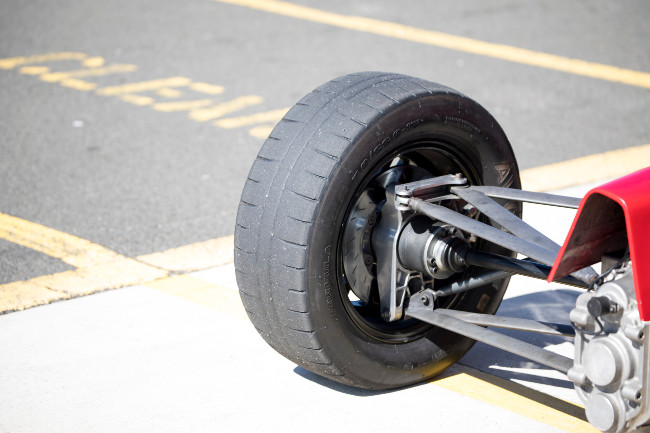The car has been with us for well over 100 years now and, as a result, is steeped in history.
Here, we delve into the origins of the motor vehicle, as well as some facts and figures on how we use our own cars and which ones we buy.
We’ll also explore certain car facts about the legal and criminal side of automotive, along with a quick dive into motorsports.
History of the motor vehicle
Origins of the car:
The origin of the word ‘car’ stems from a mixture of Latin and Anglo-French beginnings that effectively meant ‘wheeled vehicle’.
You’ll find a few versions, such as ‘carre’, ‘carra’, ‘carrum’ or ‘carrus’ – you may also see the word ‘karron’ making its way into Greek, which effectively means ‘wagon with four wheels’.
The actual word ‘car’ started appearing around the 1300s as a catch-all term for a wheeled vehicle. Meanwhile, the word ‘automobile’ made its way into our vocabulary by the end of the 1800s.

First car:
On New Year’s Eve of 1879, Carl Benz was busy putting the final touches to what would become the first stationary gasoline engine, and was able to get it running before anyone could sing ‘Auld Lang Syne’.
Commercial success followed, and allowed Benz to complete the long goal of having the engine attached to a chassis to form a single unit. As such, in 1885, a two-seater vehicle was manufactured, including Benz’s single-cylinder four-stroke engine.
At the start of the following year, Benz submitted a patent for his ‘vehicle powered by a gas engine’ – July of 1886 saw the public debut of the three-wheeled Benz Patent Motor Car, and the rest is history…
First mass-produced car:
The mass production of the car took a few steps before we got to something close to what we have today.
Carl Benz’s follow-up to his first attempt at a car, called the Benz Velo, became the world’s first large-scale production car at the end of the 19th century. Meanwhile, in the US, the Curved Dash Oldsmobile from Ransome Eli Olds saw the initial dawn of the assembly line, or at least a basic concept of one.
In this era of automotive history, many will think of the Ford Model T – while not the first mass-produced car, it was with this model that Ford introduced a more comprehensive version of the production line. It was this efficient, fast-moving assembly line that allowed Ford to sell the Model T for no more than $850, with the first customer car being delivered in October 1908.
First electric car:
The history of the electric car spans over nearly 200 years, starting in the 1820s and 1830s when groups in various nations, including the UK, began to test the concept of a battery-powered vehicle.
It wasn’t till the mid 1880s that a form of production electric car was seen, when English inventor Thomas Parker developed his creation in Wolverhampton, even creating a steam-powered generator to recharge it.
As we entered the 20th century, early interest in electric vehicles started to peak, with London seeing a fleet of battery-powered taxis in operation, as well as New York, and around a third of all vehicles in the States were electric cars by 1900.
Big names such as Thomas Edison and Ferdinand Porsche began pushing the technology even further with more efficient batteries, and even the world’s first hybrid-electric car.
However, the mass-production of cars such as the Ford Model T began a decline for electric vehicles, as the world turned to cheap and widely-available gasoline.
Legal/Criminal
First Speeding ticket:
Although it would be nearly 100 years before we saw the first speed cameras installed on our roads, the first speeding ticket was issued to one Walter Arnold in January 1896.
Racing past a constable at a whopping 8mph, Arnold was 6mph over the speed limit for town driving, and was one of two laws he was breaking. He was also without the accompaniment of a person walking at least 60 yards ahead carrying a red flag to warn road users of an oncoming vehicle.
Incidentally, Mr Arnold was one of the earliest car dealers in the UK, becoming a local seller of Benz vehicles. Newspapers were keen to publish the story of his run-in with the authorities, but this was effectively free publicity for Mr Arnold’s business, as well as his own automotive creation, ‘Arnold’ motor carriages.
Biggest speeding fine:
If you’ve ever complained about getting three points on your licence and a £150 fine, perhaps consider the position of a Swedish gentleman who was fined over £650,000 whilst driving in Switzerland.
The then 37-year-old was caught travelling at 180mph – 105mph over the limit – in his Mercedes-Benz SLS AMG in 2010, and was fined, as is the way in Switzerland, based on his own personal wealth.
First Speed camera:
Jumping ahead to a time much closer to our own, the first speed camera to appear on British roads was added to the M40 motorway in 1991.
This early version of the speed camera used rolls of actual film to capture speeding drivers, and could only make 400 exposures before it ran out and stopped catching those over the speed limit – which it apparently did in just 40 minutes of being switched on…

First fatal car accident:
As useful as motorised vehicles can be, we all know of their dangers, and the first recorded person to find this out in the worst way was Mrs Bridget Driscoll of Croydon.
August 1896 saw Mr Arthur Edsell, an employee of the Anglo-French Motor Co, hit Mrs Driscoll at just 4mph, but the accident was enough for her to fracture her skull.
Meanwhile, the first driver to unfortunately die following a motoring incident was Mr Henry Lindfield of Brighton, who was injured when his battery-powered carriage overturned doing around 16mph in February 1898.
Pet distraction:
Did you know that in the UK, you could be fined £1,000s if one of your pets in the car was deemed to have caused or contributed towards an accident?
Not only that, but such an instance could invalidate car and/or pet insurance, as well see you get points against your licence.
The Highway Code states: “When in a vehicle, make sure dogs or other animals are suitably restrained so they cannot distract you while you are driving or injure you, or themselves, if you stop quickly.”
So, while it’s almost universally adorable, if you’re the kind of driver happy to have your dog hanging its head out the window whilst the car is in motion, be aware that any car accident in such an instance may catch you out.
Watch out for puddles:
Another one that could see you fined and issued points – while some might think it’s ‘fun’ to splash pedestrians with water from a puddle when driving by, it’s actually illegal.
Considered a careless, aggressive or inconsiderate act on the road, you could be summoned to court, fined and given three points on your licence.
Direction is important:
One that some drivers might be very unaware of is to not park against the flow of traffic at night or, once again, risk the chance of being fined.
This is one of many parking rules that some may not have awareness of, with others including the direction of your front wheels when parking up or downhill.
Manufacturing
Vehicles on the road:
Motor vehicles are omnipresent across the UK and, as a result there is a total of 40.8 million vehicles on our roads (by the end of September 2022).
Cars make up over 80 per cent of that number, while 11.3 per cent are LGVs and 3.6 per cent are motorcycles.
The start of the COVID-19 pandemic contributed to 2020 being one of only post-war years where there was no increase in the number of vehicles on the road (the other being 1991).

Best-selling car:
It may be no surprise to some, but the best-selling car in Britain is the Ford Fiesta with over 4.1 million sales, with the Ford Escort not too far behind in second place, while the Vauxhall Astra is third with just under three million sold.
Most popular colour:
In the UK, the most popular car colour for the last five years (2017-2022) has been grey, with over 415,000 cars being sold in some form of the colour, making up over 25% of the market.
Black was in second place, while white was in third – meanwhile, maroon, pink and cream made up the bottom three chosen colours for vehicles bought.
Read more on this topic on our psychology of colour blog.
Cars made in Britain:
While billions of pounds’ worth of cars are imported from other countries – namely Germany, Spain and China – the manufacture of vehicles on British soil is still ongoing.
Both 2021 and 2022 saw over 1.5 million cars manufactured in the UK collectively, with some big names still making some of their most popular models. Nissan produces three models in Sunderland, while Jaguar Land Rover makes a large number of its most well-known vehicles in several UK-based locations.
With these two and plenty more producing large volume models, the UK is a huge exporter of vehicles, with eight out of 10 vehicles being sent overseas, predominantly to Europe.
Useage
Time travelling:
The time we spend in our cars has been on a decline of sorts in the last 20 years, with the pandemic having a big impact on the hours and miles spent in our vehicles.
In 2019, the UK public spent around 370 hours travelling, but dropped to 269 the following year. Meanwhile, people were travelling an average of 6,500 miles in 2019, before depleting to just over 4,300 in 2020 (these stats also include cycling and walking).
Time parked:
Despite the amount of times you might have been caught up in a traffic jam, we actually don’t spend that much time in our cars, just 4% of the time, in fact.
The other 96% of the time, your car is either parked at home or another place such as work.
Most miles:
Driven by the late Ivy Gordon, a red Volvo P1800 from 1966 is the car with the most miles ever recorded, with 3.25 million miles on the clock.
With the passing of Mr Gordon in 2018, Volvo itself now has possession of the P1800, and is still being driven to rack up even more miles.
Number of people with a driving licence:
It’s fair to say that, in the UK, people like to be able to drive, with over 51 million people holding some form of driving licence – that’s nearly 76% of the UK’s total population.
Over 41.5 million of those with licences have full driving privileges, while just over 9.5 million have a provisional.
Features & Technology facts
Indicators:
The story of the indicator – or turn signal, for any reader from the US – is an interesting one, one that includes silent movie actresses and opportunities missed due to expensive patent costs.
However, it was Edgar A. Walz Jr who is credited overall for the first modern iteration of the indicator – not that car makers were interested in his patent, until the likes of Buick in the States began manufacturing its cars with them as standard, or as an optional extra.
Window wipers:
Like a few items in this part of the list, it’s hard to imagine driving without window wipers, but then early cars didn’t have a windscreen to add them to.
However, as vehicles began to look a bit more like they do today, a woman by the name of Mary Anderson contemplated how drivers needed to often stop and clean their windows manually.
This led her to conjure the idea of wipers that could be operated from within the vehicle to clear any obstructing matter on the windshield, and the industry – eventually – began to add them as standard to cars.
Headlights:
Acetylene lamps were the original ‘headlight’ for early cars, with the flame being resistant to both wind and rain making them a no-brainer for the time – although their night-time effectiveness was questionable…
In the early 1900s, the likes of American car maker Peerless and the British company Pockley Automobile Electric Lighting were making headway into electrical headlights, as well as adding rear and side lights.
Through the 40s and into the 60s, headlight technology burst forward, eventually resulting in the halogen lamps, offering a brighter and more durable option compared to anything before it.

In-Car entertainment:
The evolution of in-car entertainment is something of a wonder, especially when looking at where we started compared to technology available today.
As car travel became more prevalent and journeys got longer, the need for some form of entertainment whilst driving grew stronger, and eventually AM radio made its way into cars, with FM finally appearing in the early 1950s.
After car manufacturers contemplated the (terrible) idea of an in-car record player, the 8-track cassette player became a much better solution in the mid 60s, giving a car’s occupants a choice of what to listen to.
The mid 80s saw the introduction of the factory-fitted CD player, with satellite radio making its debut in the early millennium. As the noughties came to a close, phone technology began to enter a new phase of connectivity, and the automotive industry reacted, allowing us to hook up our mobile devices to our vehicles for added options in entertainment, as well as other innovations such as navigation.
Cruise control:
The man credited with the creation of what would become cruise control was a gentleman by the name of Ralph Teetor – an inventor who, despite being blind, gave us one of the most popular pieces of car tech to this day.
It is believed that part of what influenced Teetor to come up with the electro-mechanical device is his frustration with the inconsistent use of the gas pedal by his patent assistant and frequent driver, Harry Lindsay.
Motorsports facts
First motorsport race:
It didn’t take long after the invention of the car before people started thinking about pitching them against each other.
In 1894, the Paris-Rouen Trial was held in July, and is seen as the first mass-event motor race. Various types of vehicles entered, with a total of 21 entrants taking the start of the 80-mile race at 8am on July 22 – all but four vehicles made it to the finish, and all 13 petrol-powered cars made it to the end.
The winner(s), however, weren’t those who crossed the line first, but instead were “the competitor whose car comes closest to the ideal”, with two parties sharing 5,000 francs – or around £25,000 in today’s money.

Fastest race car:
Tough to do this on outright speed alone, but looking at lap times around the infamous Nordschleife (Nurburgring), we can say that the Porsche 919 Hybrid Evo is the fastest.
Timo Bernard took the modified version of Porsche’s endurance car around the ‘Green Hell’ in just 5:19.55, whilst also achieving a top speed of 229mph, to beat a record that had stood since the early 80s.
Number of F1 champions:
Since the Formula 1 World Championship started in 1950, there have been 34 overall champion drivers.
Michael Schumacher and Lewis Hamilton both hold the record for most championships held by a single driver, with seven titles each. Meanwhile, Great Britain has created the most world champions since Formula 1’s inception, with 10 drivers from British shores taking the Drivers’ Championship.


















